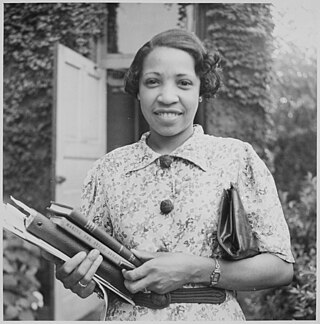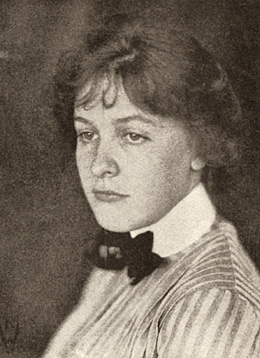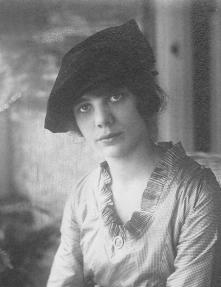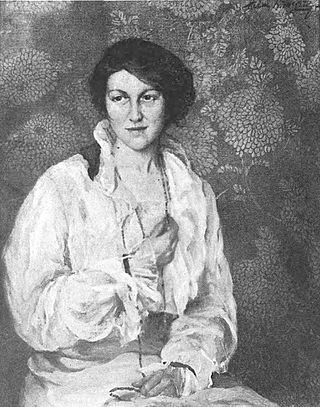Related Research Articles

Mary Elizabeth Price, also known as M. Elizabeth Price, was an American Impressionist painter. She was an early member of the Philadelphia Ten, organizing several of the group's exhibitions. She steadily exhibited her works with the Pennsylvania Academy of the Fine Arts, the National Academy of Design, and other organizations over the course of her career. She was one of the several family members who entered the field of art as artists, dealers, or framemakers.

Lois Mailou Jones (1905–1998) was an artist and educator. Her work can be found in the collections of the Smithsonian American Art Museum, The Metropolitan Museum of Art, the National Museum of Women in the Arts, the Brooklyn Museum, the Museum of Fine Arts, Boston, Muscarelle Museum of Art, and The Phillips Collection. She is often associated with the Harlem Renaissance.

The Philadelphia Ten, also known as The Ten, was a group of American female artists who exhibited together from 1917 to 1945. The group, eventually numbering 30 painters and sculptors, exhibited annually in Philadelphia and later had traveling exhibitions at museums throughout the East Coast and the Midwest.

Philadelphia School of Design for Women (1848–1932) was an art school for women in Philadelphia, Pennsylvania. Housed in the former Edwin Forrest House at 1346 North Broad Street, under the directorship of Emily Sartain (1886–1920), it became the largest art school for women in the United States. Its faculty included Robert Henri, Samuel Murray and Daniel Garber. In 1932, it merged into what is now the Moore College of Art and Design.
Mary Frank is an English visual artist who works as a sculptor, painter, printmaker, draftswoman, and illustrator.

Edna Andrade was an American abstract artist. She was an early Op Artist.
The National Association of Women Artists, Inc. (NAWA) is a United States organization, founded in 1889 to gain recognition for professional women fine artists in an era when that field was strongly male-oriented. It sponsors exhibitions, awards and prizes, and organizes lectures and special events.

Florence Esté was an American painter in oils born in Cincinnati, Ohio. She also worked in watercolors, pastels, and as an etcher and engraver. She was particularly well known for her landscapes, which were said to have been influenced by Japanese artworks and were noted for their "harmony of color". Her obituary in the New York Times referred to her as "one of the best known women landscape painters."

Sarah Stilwell Weber was an American illustrator who studied at Drexel Institute under Howard Pyle. She illustrated books and national magazines, like The Saturday Evening Post, Vogue, and The Century Magazine.

Marion Hasbrouck Beckett was an American painter.

Annie Traquair Lang was an American Impressionist painter, known for experimental impasto brushstrokes and jewel-tone abstracted forms. She exhibited portraits, still lifes and landscapes at two dozen venues in Europe and the U.S., and institutions including the Metropolitan Museum of Art acquired her works. She was acclaimed in publications including the New York Times and The International Studio. She also earned praise for her collection of paintings by her mentor, William Merritt Chase, with whom she traveled in Europe and California. She was considered the Chase pupil "who best assimilated his technique and verve."

Grace Thorp Gemberling was an American artist known for the broad range of her subjects in paintings having a pronounced psychological as well as aesthetic impact. One critic said they conveyed a mood that was "ethereal, bold and engaged." Another said her work showed "a disciplined hand and a romantic eye" together with "a magical color sense." Known for her control of detail and successful handling of line and blocks of color, she was said to paint in a modernist style that stayed clear of abstraction and was remembered by a teacher and fellow artist as "the finest woman painter in Philadelphia during the 20s and 30s."
Edith Varian Cockcroft was a Brooklyn-born painter, designer, inventor and ceramist, who exhibited at venues including the Paris Salon, National Academy of Design and Art Institute of Chicago. She was known for portraits of nudes posed against vibrant fabric backdrops as well as landscape paintings, often depicting European seacoasts. She patented and exhibited silks and velvets, produced ceramic dinnerware and designed clothing and theater sets. Her artworks were lauded for "boldness of decorative pattern and fearless use of color" and for their "character and vigor." Among the customers for her garments were the performers Irene Castle and Jeanette MacDonald Edith typically signed her paintings and ceramics "E. Varian Cockcroft" or "Cockcroft," and it was reported in 1920 that her works "have such a strong masculine quality that she is generally thought to be a man." She was a member of the Société Nationale des Beaux Arts and the National Association of Women Painters and Sculptors, and she was a founding member of the New York Society of Women Artists.
Elizabeth Kitchenman Coyne was a Pennsylvania impressionist painter, best known for her landscapes and paintings of horses. Her works are included in the permanent collections of the Pennsylvania Academy of the Fine Arts, the Woodmere Art Museum and the Philadelphia Art Alliance.
Eleanor Abrams, was an American painter. She was an original member of the Philadelphia Ten.

Helen Kiner McCarthy (1884–1927), was an American painter. She was an original member of the Philadelphia Ten.
Edith Branson (1891–1976) was an American painter who was known for her use of color to convey emotions. Her mature work included stylized figures and natural subjects as well as complete abstractions. She was intensely committed to her craft but made little effort to show in commercial galleries or sell her paintings by other means. Although her work appeared mostly in extremely large group exhibitions, it was nonetheless frequently singled out for comment in the local press.
Lucy L'Engle (1889–1978) was an American painter who had an abstract style that ranged from Cubist to representational to purely abstract. Critics appreciated the discipline she showed in constructing a solid base on which these stylistic phases evolved. As one of them, Helen Appleton Read of the Brooklyn Daily Eagle, said in 1932, she was "at heart a painter with a painter's sensuous enjoyment of the medium itself." L'Engle herself at one time described her art as "a play of form and color" and at another said, "My pictures represent my feelings about experiences. They are experiments in modern art." Over the course of a long career she used studios in both Manhattan and Provincetown and exhibited in both commercial galleries and the annual shows held by two membership organizations, the New York Society of Women Artists and the Provincetown Art Association.

Edith Loring Getchell was an American landscape painter and etcher, highly regarded for the "exquisite" tonalism of her etchings, drypoints and watercolors." Working during the "American Etching Revival," a period that lent legitimacy to an art form that had once been scorned as commercial, Getchell made use of the opportunities the vogue for etching gave her, despite a crowded field and the gender discrimination of her era. Considered one of America's leading etchers in her lifetime, Getchell's work is notable for its skill, its aesthetic values and its approach to depicting American landscape.
References
- ↑ "Edith Howard - Artist Biography for Edith Howard". AskArt. Retrieved 2017-03-11.
- 1 2 3 4 "Edith Lucile Howard". Schwarz Gallery. Retrieved 2017-03-11.
- 1 2 "The Philadelphia Ten: A Women's Artist Group 1917-1945". Westmoreland Museum of American Art. Traditional Fine Arts Organization, Inc. 2010. Retrieved 2017-03-11.
- 1 2 Bradley, Lauren (2016-08-11). "The Philadelphia Ten". Moore Women Artists. Retrieved 2017-03-11.
- 1 2 Exhibition of water color paintings: selected from the exhibition of the Philadelphia Water Color Club. Worcester Art Museum. 1914 – via archive.org.
- ↑ "The Museum Journal | The Museum: Its Relation to Modern Design". www.penn.museum. Retrieved 2018-09-12.